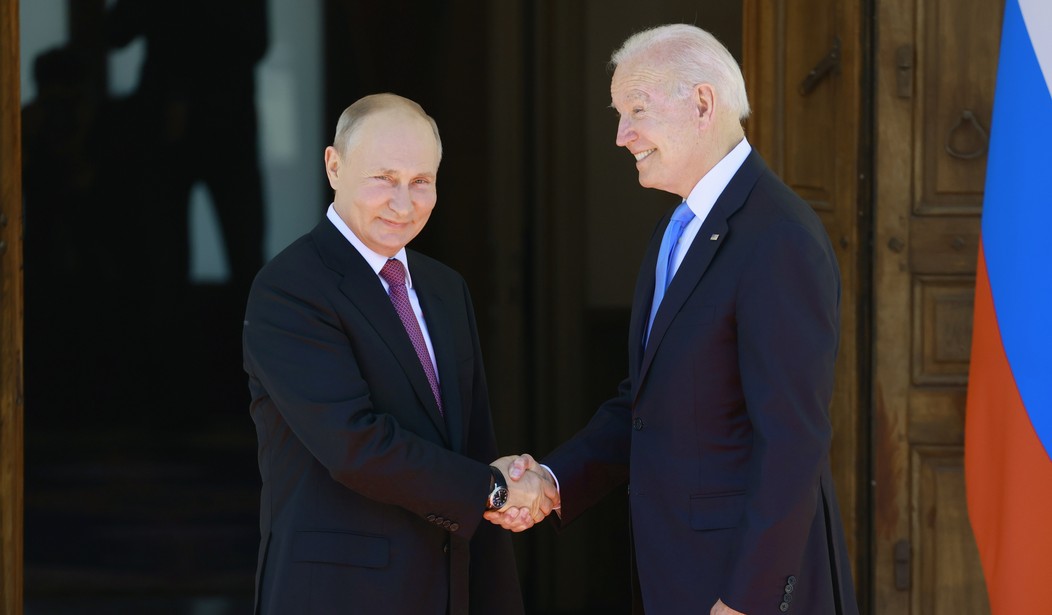Earlier this year there was a dramatic buildup of Russian troops along the border with Ukraine. That led the Biden administration to start planning a significant package of military aid for Ukraine that would total about $100 million. Then in April some of the Russian troops began pulling back from the border. Earlier this week we learned that the White House responded by putting a hold on the planned military aid.
In the spring, as Russia amassed more than 100,000 troops near the Ukrainian border, the Biden administration considered a package of lethal and nonlethal aid to Ukraine worth tens of millions of dollars under an authority given to the president by Congress.
The administration decided to table that aid package, however, after Russia began reducing the number of troops at the border in late April, said people familiar with the decision, who spoke on the condition of anonymity.
The top Republican on the Senate Foreign Relations Committee, James E. Risch (Idaho), who recently became privy to the deliberations, said the Biden administration should have moved forward on the package at that time. “It was past time to provide more for Ukraine’s defense when Putin began amassing his troops on its border,” he said in an interview. “His drawdown should not have triggered a drawdown of U.S. support.”
Today Politico published a follow up with a bit more detail:
The National Security Council directed officials to put the package together, as Washington grew increasingly concerned over a massive Russian military buildup near the border with Ukraine and in the Crimean Peninsula, according to three of the people, who like the others asked not to be named in order to speak candidly about internal discussions. Officials at the State Department and Pentagon worked to assemble the proposal.
But officials on the National Security Council ended up putting the proposal on hold after Russia announced it would draw down troops stationed near Ukraine and in the lead-up to President Joe Biden’s high-stakes summit with Russian President Vladimir Putin.
But did Russia actually pull back from the border in April? Last month the NY Times published a story saying the Russian drawdown was actually pretty minimal. There are still about 80,000 troops stationed there.
Russia has withdrawn only a few thousand troops from the border with Ukraine, senior Biden administration officials said, despite signals from Moscow last month that it was dialing down tensions in the volatile region.
Senior Defense Department officials said that close to 80,000 Russian troops remained near various strips of the country’s border with Ukraine, still the biggest force Russia has amassed there since Moscow annexed Crimea in 2014.
The Russian military did order some units back to their barracks by May 1 — and they did move from the border — the officials said. But many of the units left their trucks and armored vehicles behind, a signal that they could go back if President Vladimir V. Putin of Russia decided to deploy them again.
So not only are the majority of troops still there, the ones who left didn’t even take their heavy equipment with them. It’s all still sitting at the border as if awaiting their return. And the possibility of a land incursion isn’t the only thing Ukraine needs to be worried about. The Atlantic Council published a piece this week warning that Putin was in a position to cut off Ukraine’s access to the Black Sea.
With attention focused firmly on the more than 2000 km land border separating Russia and Ukraine, relatively few observers appeared to notice the buildup of Russian naval forces in the Black Sea region that also took place during spring 2021. Indeed, Moscow’s decision to effectively close the Azov Sea to non-Russian military and state-owned vessels provoked little comment, despite the grave implications for Ukrainian shipping passing to and from the country’s formerly bustling Azov Sea ports. Without any fuss or fanfare, the Azov Sea had become a Russian lake.
The success of Russia’s Azov Sea gambit now sets the stage for a potentially game-changing maritime escalation further along Ukraine’s southern coastline. Given the lack of international reaction to the slow-motion annexation of the Azov Sea, many in Kyiv now fear that Moscow will soon seek to expand this maritime blockade and cut Ukraine off completely from the Black Sea…
Given the strategic importance of Ukraine’s remaining Black Sea ports, there is a real danger that Russia may decide to block maritime traffic in order to bring the Ukrainian economy to its knees. This is thought to be militarily feasible. Indeed, Russia already has sufficient warships in the Black Sea to attempt such an operation.
The Biden administration seems to think it can stabilize the situation by not responding to it. Maybe they have reason to believe Putin is just looking to provoke a reaction more than looking to annex more of his neighbor.
But there’s a real risk this could backfire as well. Putin isn’t a madman but he is looking to remain in power for life and recent polls show opposition to that plan are at the highest levels since he annexed Crimea. So the possibility of a repeat performance to boost his standing has to be knocking around in his head.
So I really hope that in this case the White House knows what it’s doing but it’s not hard to find reasons to doubt it.








Join the conversation as a VIP Member